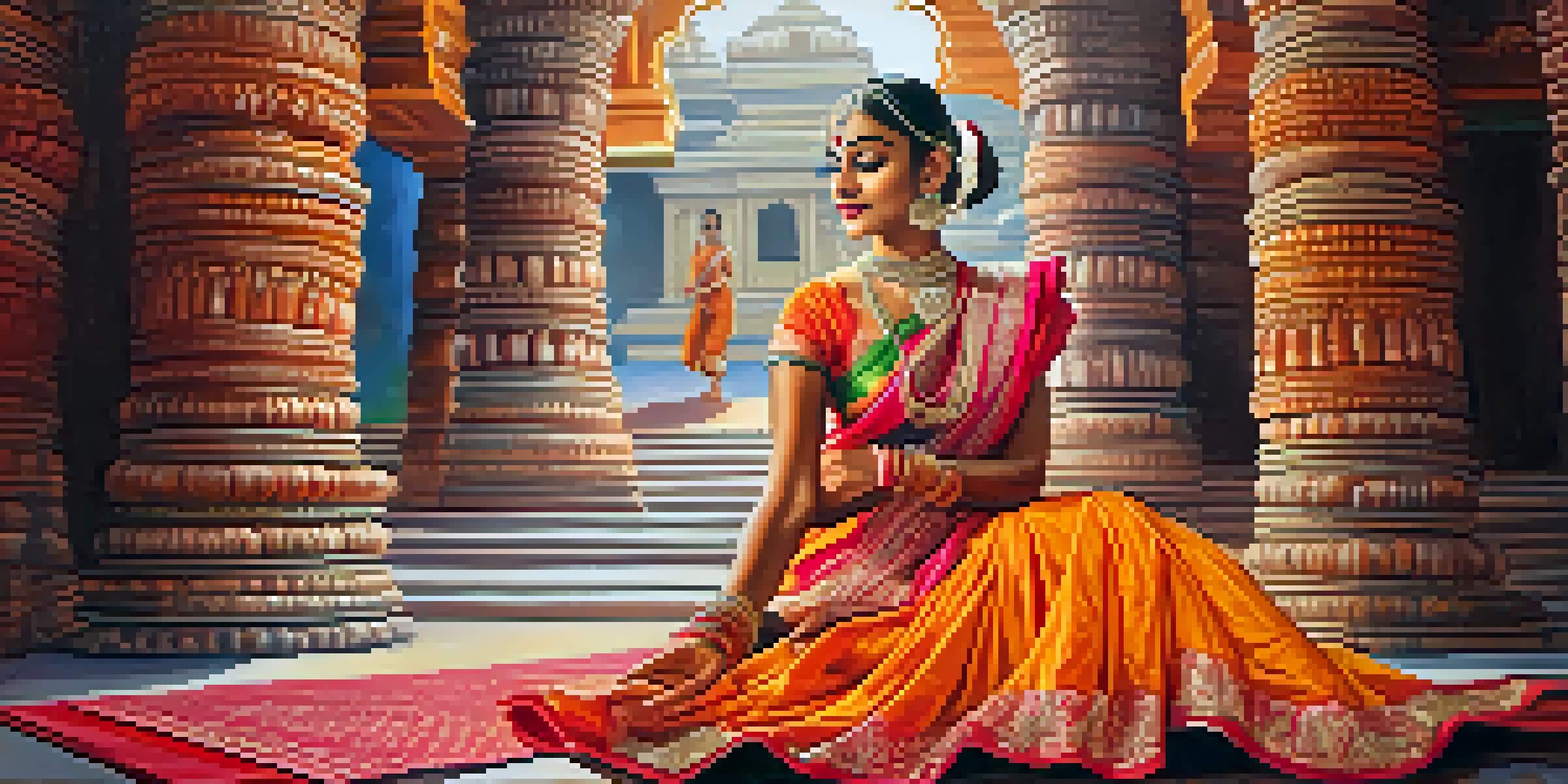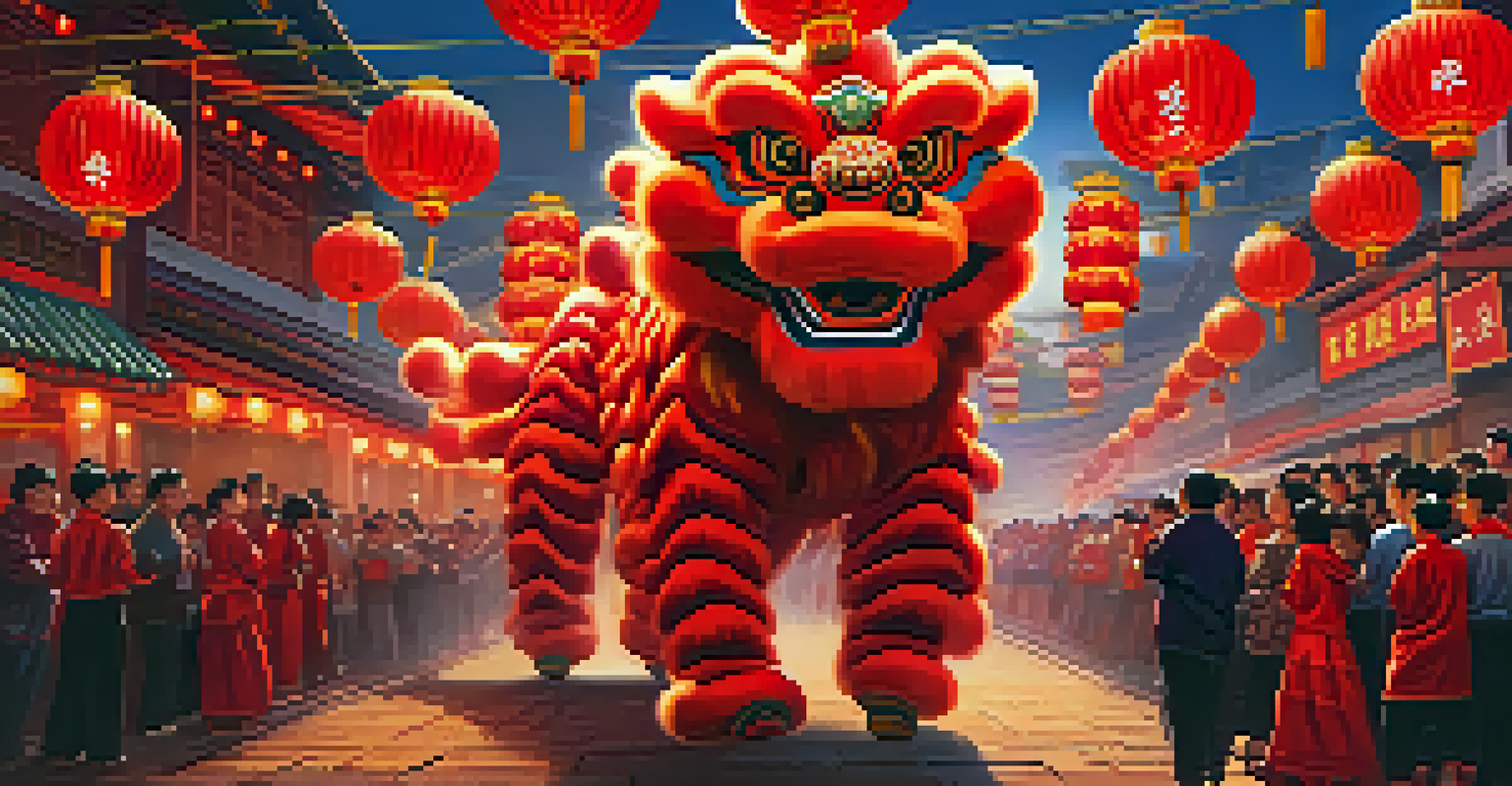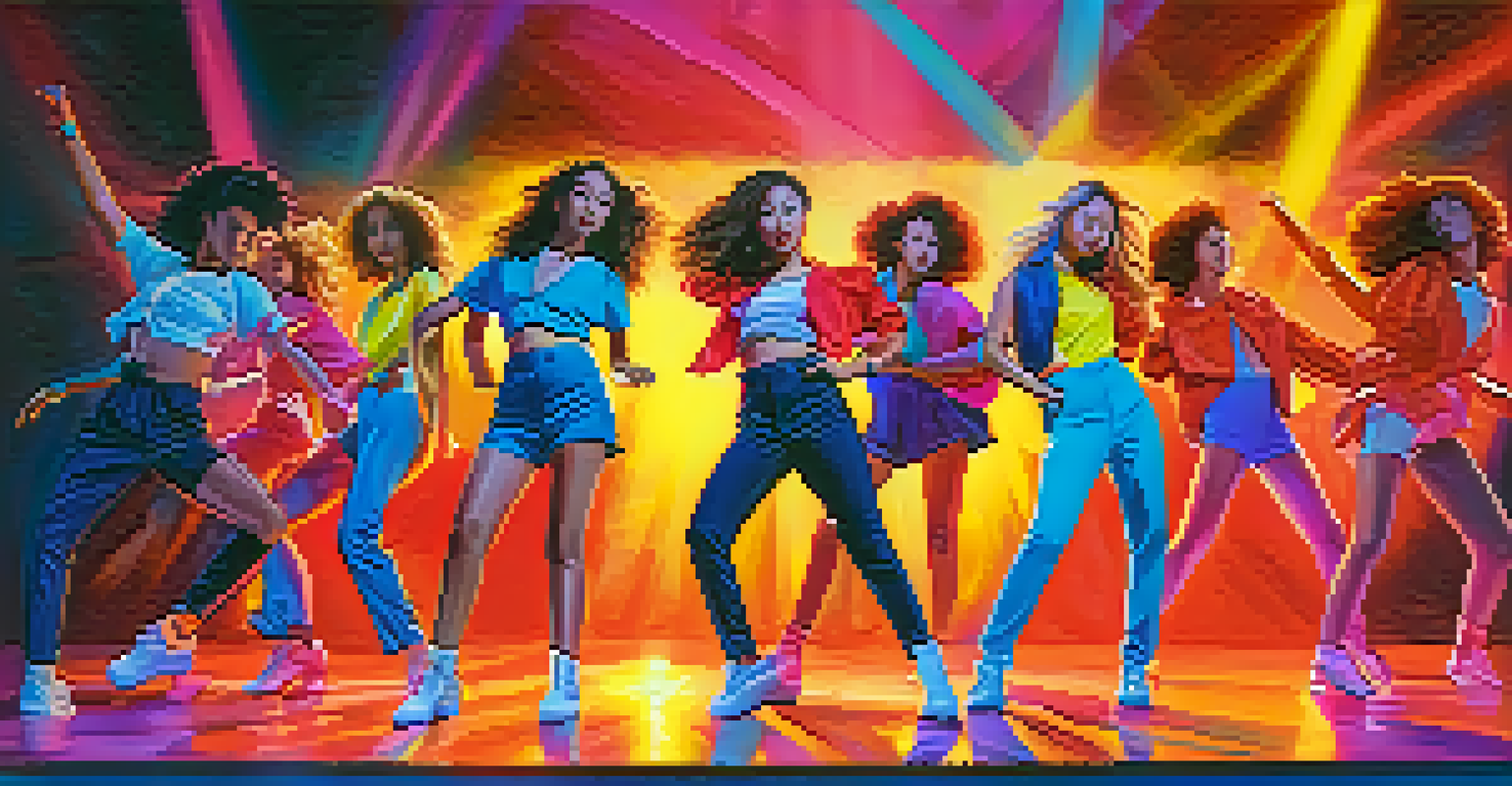Asian Dance Styles: Traditional and Modern Interpretations

The Rich Heritage of Traditional Asian Dance Forms
Asian dance styles are deeply rooted in the cultural heritage of their respective regions. From the classical Bharatanatyam of India to the elegant Kabuki theatre of Japan, each dance tells a story steeped in history and tradition. These art forms often serve as a medium for spiritual expression, cultural storytelling, and community bonding.
Dance is the hidden language of the soul.
In many cases, traditional dances are closely linked to rituals, festivals, and celebrations, making them a vital part of social life. For instance, the Lion Dance performed during Lunar New Year festivities is not just an artistic display; it's believed to bring good luck and drive away evil spirits. Each movement, costume, and musical accompaniment has a specific significance, enhancing the overall experience.
Moreover, traditional dances are often passed down through generations, preserving unique techniques and styles. This continuity allows younger dancers to connect with their roots while also encouraging them to innovate and adapt, ensuring that these traditions remain vibrant and relevant.
Key Characteristics of Traditional Asian Dance Styles
Traditional Asian dance styles share several key characteristics, including intricate movements, storytelling, and the use of symbolism. Each region has its own distinct techniques and aesthetics, from the fluid hand gestures of Indian Kathak to the precise footwork of Chinese classical dance. These movements are often imbued with cultural meaning, making them a fascinating subject of study.

Costuming also plays a crucial role in traditional dances, with each outfit reflecting the cultural significance and historical context of the performance. For instance, the bright colors and elaborate designs of Thai classical dance costumes symbolize various aspects of Thai culture and mythology. This attention to detail enhances the visual appeal and enriches the storytelling aspect of the dance.
Traditional Dance Preserves Culture
Traditional Asian dance forms serve as a vital means of cultural expression, storytelling, and community bonding.
Furthermore, traditional dances are typically performed in groups, emphasizing community and collaboration. Dancers often practice together for years, building not just their skills but also strong bonds that reflect the communal nature of these art forms. As a result, traditional dances are a celebration of both individual talent and collective effort.
The Rise of Modern Asian Dance Interpretations
In recent years, modern interpretations of Asian dance have gained popularity, blending traditional elements with contemporary styles. This fusion allows for creative expression while maintaining a connection to cultural roots. For example, many choreographers incorporate hip-hop and jazz into classical forms, creating a dynamic and engaging experience for audiences.
Dance is the joy of movement and the heart of life.
These modern interpretations often reflect current social themes and personal narratives, making dance more relatable to younger generations. By addressing contemporary issues such as identity, gender, and globalization, modern Asian dance resonates with a broader audience while challenging traditional norms. This evolution showcases the adaptability and relevance of these ancient art forms.
Moreover, the influence of technology and social media has played a significant role in promoting modern dance styles. Platforms like TikTok and Instagram allow dancers to share their work with a global audience, inspiring collaboration and innovation. As a result, we see a new wave of artists who are not only preserving their cultural heritage but also redefining it for the modern world.
Prominent Asian Dance Forms to Explore
There are numerous traditional and modern Asian dance forms that are worth exploring, each with its unique flair and history. Bharatanatyam, for example, is one of the oldest classical dance forms from India, known for its intricate footwork and expressive hand gestures. Its performances often depict themes from Hindu mythology, making it a profound cultural experience.
Another fascinating form is the Chinese Lion Dance, which combines martial arts with acrobatic movements to celebrate the Lunar New Year. The vibrant costumes and rhythmic drumming create an exhilarating atmosphere, making it a highlight of many cultural festivals. This dance is not only entertaining but also serves as a cultural symbol of strength and good fortune.
Modern Fusion Redefines Dance
The rise of modern interpretations blends traditional elements with contemporary styles, making dance more relatable to younger generations.
On the modern front, K-Pop dance has taken the world by storm, blending traditional Korean elements with global music trends. The choreography often features sharp movements and synchronized routines, captivating audiences worldwide. This genre exemplifies how traditional dance can evolve and influence contemporary culture, making it an exciting area to watch.
The Role of Dance in Cultural Identity
Dance plays a vital role in shaping cultural identity, serving as a means of expression and connection to one’s heritage. For many Asian communities, traditional dance is a way to honor ancestors, celebrate festivals, and pass down stories. This communal aspect is what makes dance a powerful tool for cultural preservation.
As societies become more interconnected, the blending of cultures often leads to the fusion of dance styles. This not only enriches the art form but also encourages dialogue and understanding among diverse communities. Dancers often find themselves navigating multiple cultural identities, which can lead to innovative expressions that reflect their personal journeys.
By participating in both traditional and modern dance forms, individuals can explore their cultural roots while also embracing new influences. This duality allows for a richer understanding of self and community, fostering a sense of belonging in an ever-changing world. Dance becomes a celebration of diversity, creating a space for dialogue and connection.
The Impact of Globalization on Asian Dance
Globalization has significantly influenced the evolution of Asian dance, breaking down barriers and allowing for cross-cultural exchanges. As artists travel and collaborate internationally, they bring their unique styles and techniques to new audiences. This exchange fosters innovation and creativity, leading to the emergence of hybrid forms that blend diverse influences.
However, this globalization can also pose challenges, such as the risk of cultural appropriation. It’s essential for artists and audiences alike to approach cultural exchange with respect and understanding. By acknowledging the origins and significance of traditional dances, we can appreciate them more deeply and avoid misrepresentation.
Globalization Shapes Dance Evolution
Globalization fosters cross-cultural exchanges in dance, leading to innovative hybrid forms while also posing challenges like cultural appropriation.
Despite these challenges, the global stage provides an opportunity for Asian dance to shine. Performers can now showcase their work to international audiences, raising awareness and appreciation for their cultural heritage. This visibility not only honors their roots but also allows for a broader dialogue about the significance of dance in various societies.
The Future of Asian Dance: Trends and Innovations
As we look to the future, Asian dance is poised for exciting developments, with trends leaning towards increased fusion and collaboration. Artists are increasingly experimenting with blending various dance styles, creating unique performances that reflect the complexities of modern identity. This cross-pollination of ideas promises to keep the art form fresh and relevant.
Technology will also play a pivotal role in shaping the future of dance. Virtual reality experiences, online classes, and digital performances can reach wider audiences, making dance more accessible than ever. This shift not only democratizes the art form but also allows for innovative ways to engage with traditional practices.

Ultimately, the future of Asian dance lies in the balance between honoring tradition and embracing modernity. As artists continue to push boundaries, we can expect to see a dynamic landscape where cultural heritage and contemporary expression coexist, enriching the global dance community.